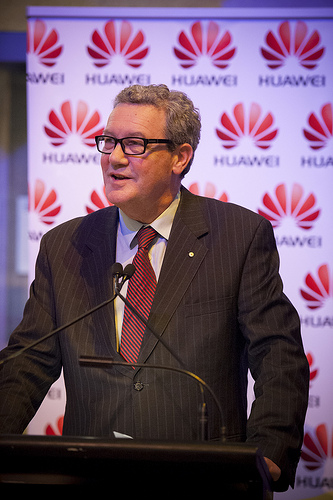China’s innovators patent-ly waiting

INNOVATION has replaced imitation for at least 77 leading Chinese companies, according to research by economists from the Technische Universität München (TUM) and the Munich Innovation Group.
Even young Chinese companies are filing international patents on a massive scale, the research discovered.
Economists from TUM and the Munich Innovation Group who analysed the patent portfolios and internationalisation strategies of the 77 Chinese companies found that in the wake of telecommunications and IT companies, other industries are now heavily investing in their own intellectual property as well.
Telecommunications company Huawei’s European Research and Development headquarters is set up in Munich and seeks to employ engineers from Munich’s universities.
The automotive enterprise BYD has filed hundreds of intellectual property rights in Western countries. Chang’an is aggressively internationalizing its business in Russia, Brazil and African countries.
“For a long time, Chinese companies had a reputation for simply imitating their Western competitors. But the number of patent applications filed by them has increased heavily in recent years,” said TUM’s chair for Strategy and Organization, Philipp Sandner.
“China has a large number of up-and-coming companies that are pursuing an aggressive internationalization strategy – but some of these companies are still barely known in Europe or the US,” Dr Sandner said.
He said even young firms were protecting their intellectual property rights on a massive scale in Europe and the US – and yet they are barely known there. There were growing numbers of Chinese-owned patents in energy, chemicals and pharmaceuticals.
Researchers from TUM and analysts at Munich Innovation Group focused on 77 Chinese companies with high potential in innovation, internationalisation and growth. They concentrated on the key industries of automotive, chemicals and pharmaceuticals, electronics, IT and internet, engineering, solar, telecommunications, and oil and steel.
The economists analysed mainly the companies’ patent portfolios, enabling them to draw inferences about their general development and their internationalisation strategy. For example, by studying the geographical distribution of patent applications, the researchers could conclude which are the firms’ target markets.
One conclusion the research team arrived at is that the imitation strategy of Chinese companies is on a downturn, Dr Sandner said.
He said today, for most of them, self-developed intellectual property plays a dominant role in their businesses.
“Telecommunications companies like Huawei are pioneers,” Dr Standner said. “Many of them have now seen an end to the years with the ever-rising numbers of patent applications, their patent activities having stabilized at a high level. For other industries like energy, chemicals and pharmaceuticals the analyses indicate a strong rise in innovative activity.”
Even young companies are filing 40 percent of their patents overseas, he said.
Researchers found the majority of Chinese companies were still primarily operating in their domestic market, including some companies with very high growth rates. But the number of distributed patent applications in Europe and North America over the last years illustrates the growing importance of these markets.
According to the European Patent Office (EPO), Chinese organisations filed more than 18,000 applications for European patents in 2012. China represented 7.3 percent of all European patent applications in 2012, ranking fourth after the US (24.6%), Japan (20.1%) and Germany (13.3%).
Many relatively new Chinese companies were focused on internationalisation from the start. Non-Chinese patents account for a substantial portion – 20 to 40 percent – of their portfolios.
“It’s these companies that are underestimated in Western countries – because we have never heard of them,”Dr Sandner said. “A large number of firms that could soon be global market leaders are barely known at all.”
One element in the strategy of Chinese companies represents a particular challenge for European and North American economies, the report said – and by inference that holds for Australia: besides patents, Chinese firms are filing a relatively large number of applications for utility models compared to Western businesses.
Being in worldwide IP registers, these intellectual property rights can protect a product in manifold configurations. As such, Chinese firms are securing a great deal of scope for themselves for future product developments, whereas other companies could be seriously blocked in this regard.
The German economists, however, do think it unlikely that Chinese firms will be able to sustain the level of growth in their patent applications given the present economic development.
The report said it was unclear whether firms would hold on to their rights when they have to pay renewal fees year by year.
If firms invested their money to keep and defend their patent rights, it can be assumed the protected technology has an economic value, the researchers said.
The economists have now made profiles of the companies available online, arranged in the form of 77 corporate profiles and nine industry analyses:
http://www.chinese-champions.com
http://www.strategie.wi.tum.de
Technische Universität München (TUM) is one of Europe’s leading research universities, with around 500 professors, 10,000 academic and non-academic staff, and 35,000 students. Its focus areas are the engineering sciences, natural sciences, life sciences and medicine, reinforced by schools of management and education. TUM outlines that it acts as an entrepreneurial university that promotes talents and creates value for society. In that, it profits from having strong partners in science and industry. It is represented worldwide with a campus in Singapore as well as offices in Beijing, Brussels, Cairo, Mumbai, and São Paulo. Nobel Prize winners and inventors such as Rudolf Diesel and Carl von Linde have done research at TUM. In 2006 and 2012 it won recognition as a German ‘Excellence University’. In international rankings, it regularly places among the best universities in Germany.
www.tum.de
ends

